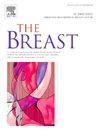Systematic literature review and trial-level meta-analysis of aromatase inhibitors vs tamoxifen in patients with HR+/HER2− early breast cancer
IF 5.7
2区 医学
Q1 OBSTETRICS & GYNECOLOGY
引用次数: 0
Abstract
Background
Current standard of care for patients with HR+/HER2− early breast cancer (EBC) includes adjuvant endocrine therapy with an aromatase inhibitor (AI) or tamoxifen (TAM). We present a trial-level meta-analysis on efficacy of AI vs TAM in patients with HR+/HER2− EBC.
Methods
A systematic literature review was conducted using key medical literature databases (eg, PubMed; inception to October 2023) and data from conferences (to December 2023). Phase 3 randomized controlled trials (RCTs) that had ≥80 % of patients with HR+/HER2− EBC (or available subgroup data) and reported a disease-free survival (DFS) hazard ratio for AI vs TAM were included in the meta-analysis, regardless of menopausal status and ovarian function suppression (OFS) use. The generic invariance method was used to calculate a pooled effect estimate of DFS hazard ratios and 95 % CIs. A base-case analysis (all RCTs) and scenario analyses for NSAI-only, premenopausal, and postmenopausal RCTs were conducted.
Results
Five RCTs were identified for inclusion in the meta-analysis. In the base-case analysis, DFS significantly favored AI ± OFS vs TAM ± OFS (pooled hazard ratio, 0.68; 95 % CI, 0.61–0.76; P < .0001). Results from scenario analyses were consistent with the base case; NSAI-only (pooled hazard ratio, 0.68; 95 % CI, 0.59–0.78; P < .0001), premenopausal (pooled hazard ratio, 0.65; 95 % CI, 0.56–0.76; P < .0001), and postmenopausal (pooled hazard ratio, 0.72; 95 % CI, 0.61–0.86; P = .001) RCTs favored AI ± OFS over TAM ± OFS.
Conclusions
This trial-level meta-analysis demonstrated a significant DFS benefit with AI vs TAM for patients with HR+/HER2− EBC, which was more pronounced in premenopausal women.
芳香化酶抑制剂与他莫昔芬在HR+/HER2−早期乳腺癌患者中的meta分析
背景目前对HR+/HER2-早期乳腺癌(EBC)患者的标准治疗方法包括芳香化酶抑制剂(AI)或他莫昔芬(TAM)辅助内分泌治疗。我们对AI与TAM在HR+/HER2- EBC患者中的疗效进行了试验水平的荟萃分析。方法利用主要医学文献数据库(如PubMed;起始时间至2023年10月)和会议数据(至2023年12月)进行了系统性文献综述。荟萃分析纳入了HR+/HER2-EBC患者比例≥80%(或可用亚组数据)且报告了AI与TAM的无病生存(DFS)危险比的3期随机对照试验(RCT),不考虑绝经状态和卵巢功能抑制(OFS)的使用。采用通用不变量法计算 DFS 危险比的集合效应估计值和 95 % CI。进行了基础案例分析(所有 RCT)以及仅使用非甾体抗炎药物、绝经前和绝经后 RCT 的情景分析。在基础案例分析中,DFS明显优于AI±OFS与TAM±OFS(汇总危险比,0.68;95 % CI,0.61-0.76;P <.0001)。情景分析的结果与基础病例一致;仅非甾体抗炎药(汇总危险比,0.68;95 % CI,0.59-0.78;P <;.0001)、绝经前(汇总危险比,0.65;95 % CI,0.56-0.76;P <;.0001)和绝经后(汇总危险比,0.72;95 % CI,0.61-0.86;P = .001)的RCT研究中,AI±OFS优于TAM±OFS.结论这项试验水平的荟萃分析表明,对于HR+/HER2-EBC患者,AI与TAM相比具有显著的DFS获益,这在绝经前妇女中更为明显。
本文章由计算机程序翻译,如有差异,请以英文原文为准。
求助全文
约1分钟内获得全文
求助全文
来源期刊

Breast
医学-妇产科学
CiteScore
8.70
自引率
2.60%
发文量
165
审稿时长
59 days
期刊介绍:
The Breast is an international, multidisciplinary journal for researchers and clinicians, which focuses on translational and clinical research for the advancement of breast cancer prevention, diagnosis and treatment of all stages.
 求助内容:
求助内容: 应助结果提醒方式:
应助结果提醒方式:


